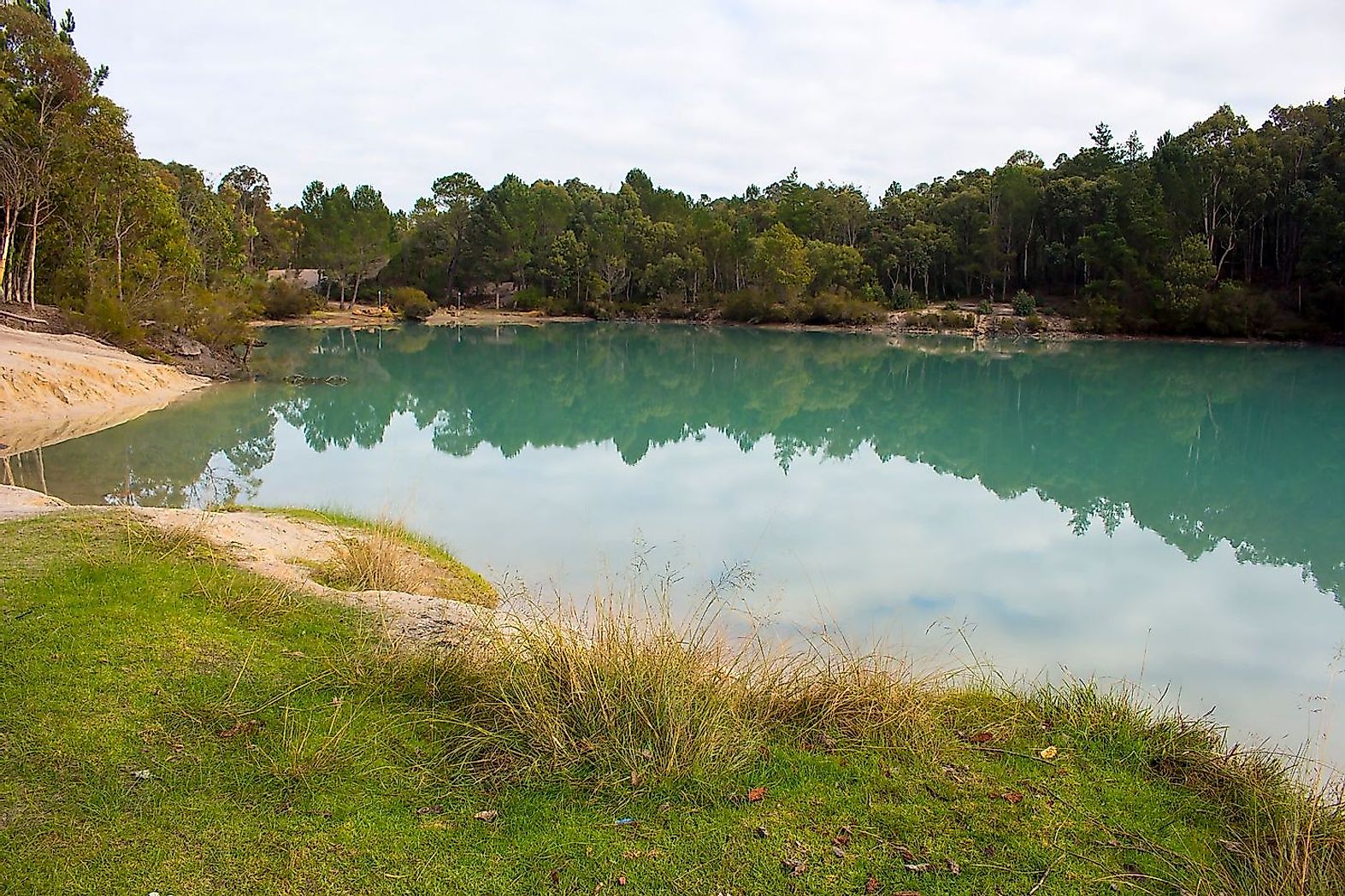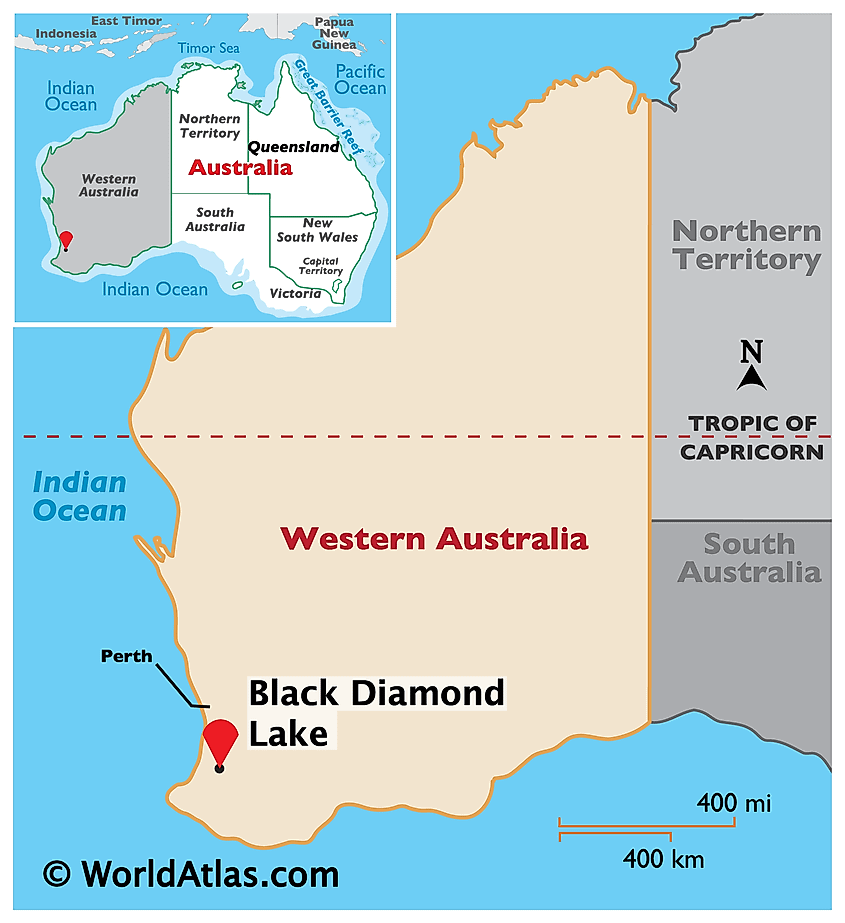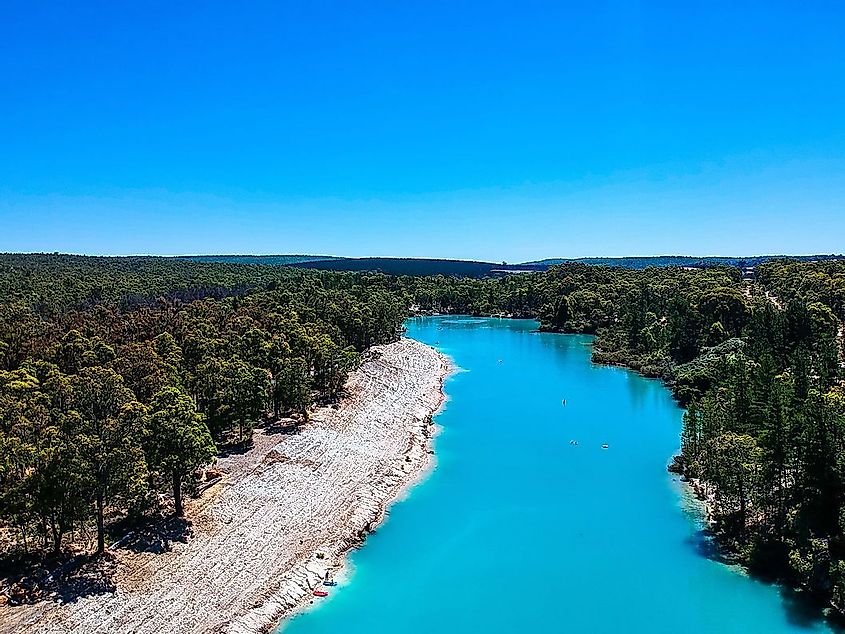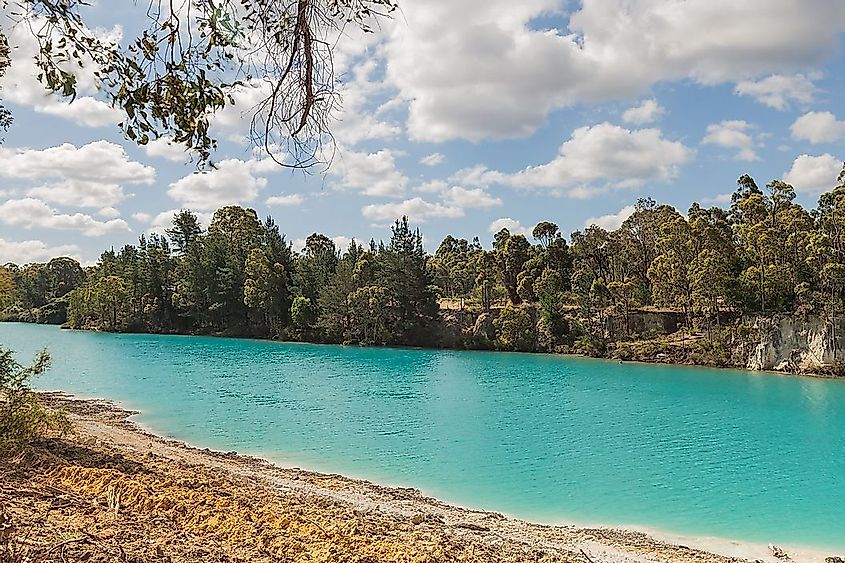
Black Diamond Lake
Collie and Allison are two important coal-producing centers in Western Australia’s South West region. The two towns are located near the Collie River and are approximately 210 kilometers to the south of Perth. Although Collie and Allison are known for coal production, they also have a thriving tourism and agricultural industry. One of the main attractions in the region is an artificial water hole known as the Black Diamond Lake, that is located about five kilometers to the west of Collie and Allison. The lake contains intense blue water and is surrounded by a lush green forest, making it one of Western Australia’s most beautiful water holes and a social media hotspot. When people mention the “Black Diamond Lake in Perth,” they mean the Black Diamond Lake in Collie and Allison.
Location Of The Black Diamond Lake

The Black Diamond Lake is located in the west of the coal-producing towns of Collie and Allison. The two towns are approximately 210 kilometers to the south of Western Australia's capital - Perth, and are accessible by the Coalfields Highway. The lake is about a two-hour drive from Perth and can only be accessed via the highway. The lake is located approximately 600 meters on the Ferguson Road, which branches south off the highway in Allison.

Since Black Diamond Lake is five kilometers west of Collie, visitors from Perth branch off into the Ferguson Road before reaching Collie. To access the lake from Collie, visitors drive five kilometers west and branch off Ferguson Road. A section of the Collie River flows less than one kilometers south of the Black Diamond Lake.
Formation Of The Black Diamond Lake

The Black Diamond Lake is an artificial Lake or a water hole that formed from an abandoned mine site in Allison. Collie and Allisson have been coal-producing centers since the early 20th century, following the discovery of coal in the area in the early 1880s. The mine site that is now the Black Diamond Lake was decommissioned and abandoned in the 1950s. Since the open pit was not refilled with soil or any other material, it filled with water, mostly from the rain and surface runoff, and formed the lake. Since the site was abandoned, large trees grew around the lake undisturbed, providing a beautiful aerial view.
Although the exact depth of the lake has not been established, it is shallow on the edges and gradually becomes deeper towards the center. It also has chalky sediments below the water, making it difficult to see through the water and estimate the depth. However, the lake’s main attraction contributing to its popularity on social media is its intense blue color. The blue water is best viewed when the sky is clear and under sunny conditions, during which water reflects a lot of light. The blue color results from the chalky limestone sediment on the floor of the lake.
Lake’s Safety Warning
Since its formation, Black Diamond Lake was largely unmanaged and freely accessible to any person visiting the area. Many people visit the lake daily to swim, relax on its banks, or paddleboat. However, the lake's safety is yet to be determined, considering that the area previously served as a mining site. Although swimming is permitted, people are warned to swim at their own risk due to the lake’s low pH caused by past mining activities. The lake may also contain submerged objects that may be harmful to swimmers.
Like most inland water bodies, the Black Diamond Lake may harbor harmful microorganisms like Naegleria fowleri that transmit deadly diseases. However, Western Australia’s government has carried out some work on the lake to improve its safety, including revegetation and making the slopes safer to use. The government also frequently closes the lake to test the water for the presence of certain dangerous microorganisms and often warn swimmers about the dangerous bacteria that are present in water. The authorities also do not allow camping and overnight stay at the lake.










